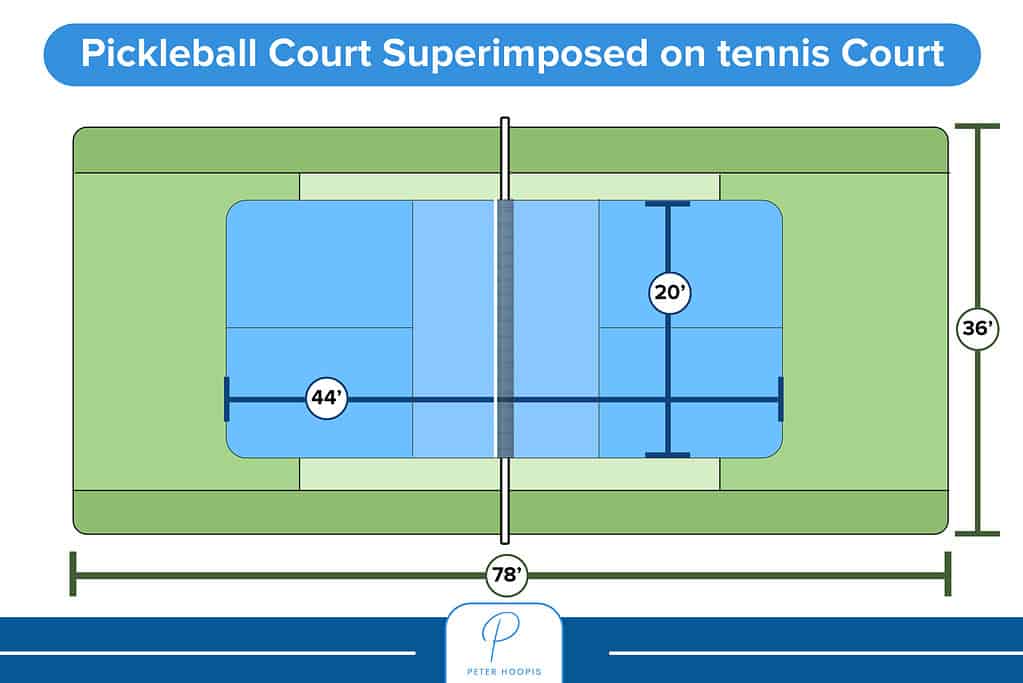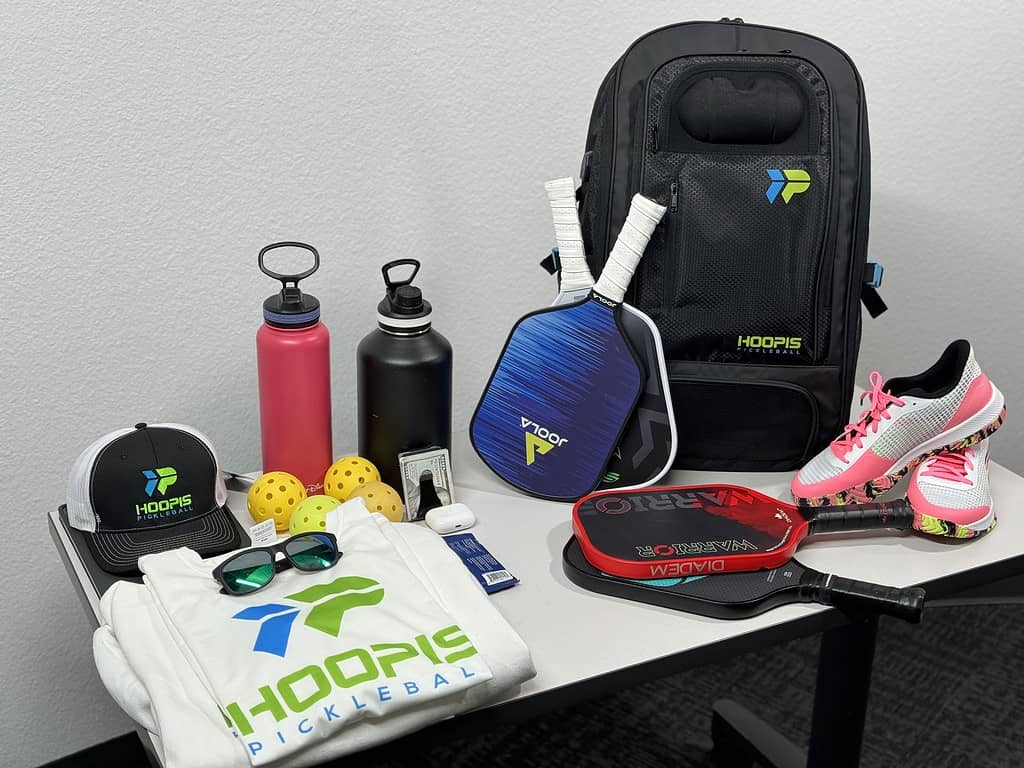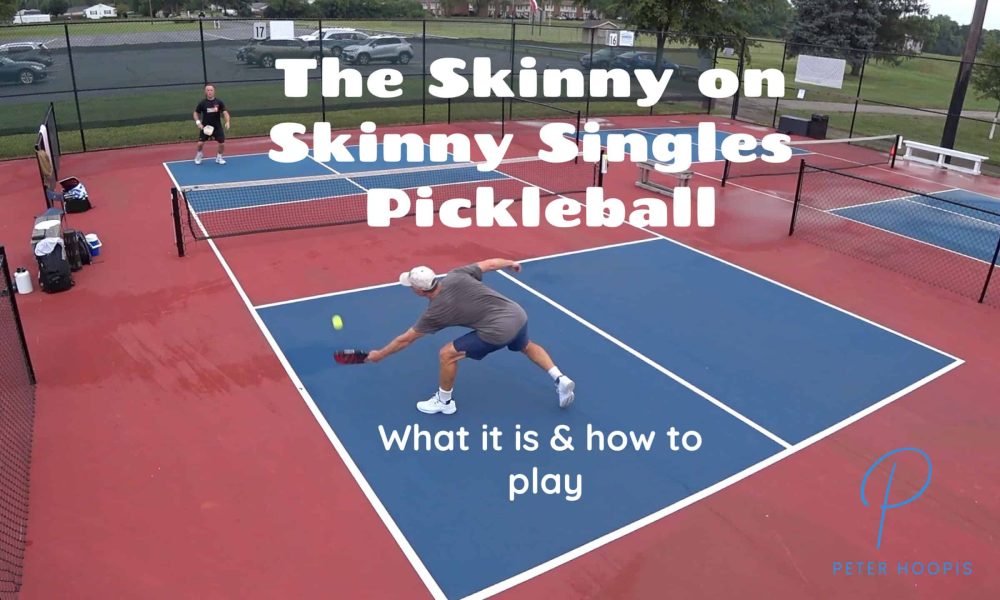Hey there, fellow Pickleball enthusiasts! As a die-hard fan of the sport, I’m sure you’ve played your fair share of doubles matches. But have you tried skinny singles pickleball?
This unique variation of the traditional singles game is a fun and fast-paced way to enjoy a match without running all over the court.
In this blog post, we’ll explore everything you need to know about skinny singles, from its rules to tips for success on the court.
So let’s jump in and expand our knowledge on this thrilling adaptation of one of America’s fastest-growing sports!
Let’s get started.
What is Skinny Singles in Pickleball?
As a Pickleball fanatic, I can tell you that Skinny Singles is a game-changing adaptation of the traditional pickleball singles game. Imagine playing a match where you only use half of the court width-wise, yet the full length is maintained. This modification makes the playing area much narrower, requiring heightened precision during gameplay.
Not only does the smaller court size result in more exciting, fast-paced matches, but it also encourages a new strategic approach to the game, while decreasing the need for excessive running around.
It truly is an exhilarating twist on one of the most beloved sports in America.
How Is The Court Set Up?

In skinny singles, you use the same traditional pickleball court, except you only use half of it (width-wise) at a time. The length stays the same. This brings some fun and new challenges to the game.
You are either playing constantly cross-court from your opponent or you are playing on half the width size of the court back and forth. It definitely changes up the game and the strategy involved!
How to Play Skinny Singles in Pickleball
So, how does it work? Essentially, things are very similar to regular, singles games.
With the exception of a few things of course.
The game starts just like if you were playing singles pickleball from the even side of the court.
In skinny singles, only the server moves sides when they win a point.
So for example, let’s say the match is just starting and the score is 0-0. We serve from the even side of the court like always (the right side). So this will be a cross-court serve like usual as the returner is also in their usual return spot. But the point will continue to play out this way in a cross-court point. So each player can only hit the ball cross court into their opponent’s court.
Let’s say the server wins the point. Only the server moves after they win the point. The returner does not move. So now, the server is serving from the odd side of the court to the returner who is now straight across from them in their even side of the court(remember they don’t move).
So in our example the score is now 1-0. The server serves directly across and the point is played out on that half of the court only. If it lands on the other side of the court that is considered out of bounds and the point is over.
Let’s say the server wins the point again so now it is 2-0. The server moves back to the even side of the court to serve cross-court to the returner since again, the returner hasn’t moved sides of the court yet. Let’s say in this cross-court point, the returner wins the point. Both the server and returner stay in the same spot. It is a side out.
The new server is serving from the even side with the score 0-2 cross-court back to the returner. In this example, it will be played out as a cross-court point.
For our example, the server wins, and moves to the left, with the returner staying in the same spot. The score is now 1-2, and this point will be played in half the court directly straight on from each other.
Other Rules of Skinny Singles
Skinny singles follow most of the same basic rules as traditional, pickleball games, with some key differences:
- The court dimensions are reduced to half-width (10 feet wide instead of 20 feet).
- Only one person per side, creating a genuine head-to-head battle.
- The serve must land within the service box on the opposite side.
- All other standard rules apply, such as the two-bounce rule and non-volley zone restrictions.
- The Game is played to 11 same as pickleball singles scoring.
Learn how to play skinny singles in pickleball, a challenging game variation that can help improve your skills even in a doubles game. The rules include a reduced court size and only one player per side, with strategies such as maintaining proper positioning and focusing on ball placement for success.
What are the Benefits of Playing Skinny Singles?
Outside of skinny singles being very fun and different to play, there are some great benefits to your doubles game playing skinny singles.
Play All The Angles
By playing skinny singles, you are forced to play all the angles. This means, in some situations, you will be forced to play cross-court shots and in other situations, you will be forced to only play straight on.
This can be very beneficial for playing doubles since it will make you play both types of shots. A lot of times we get in our comfort zone and play the shots we favor all the time and neglect others. With skinny singles, that is not an option.
Learn to Play Your Side
Playing skinny singles will help you to learn how to play your side of the court. We do see a lot of players move across the court to their partner’s side very often, but with skinny singles, your “partner’s” side of the court is now out of bounds. It teaches you to stay on your side and helps you to get a feel of “letting a ball go” so you are not chasing all the time.
Enhances your Precision
As you might expect, with only half the width of the court available as in bounds, this will force you to be more precise with your shots. Your margin of error has gone way up with the reduced court size so you will need to rely on more precise ball placement in your opponent’s court. This will only help your game long term.
Keeps your Mind Going
Playing skinny singles helps to keep your mind sharp and focused on new challenges. You are going from cross-court only shots to not being able to hit a cross court shot in the next rally. It really helps you make your game a very solid well rounded game.
What Equipment Do You Need?

Fortunately, no new equipment is needed for skinny singles.
- A good paddle. I recommend finding one that is comfortable in your hand and has a good grip.
- You will need pickleballs, which are plastic balls with holes in them similar to a wiffle ball.
- Comfortable athletic shoes that provide good support and traction on the court (ideally tennis or pickleball shoes).
- Optional but recommended items include a hat, sunglasses, and water bottle.
- If you are setting up your own court, which you can do, you will need a portable net. This is becoming more necessary since court time is hard to get these days!
- Last, a good bag to carry all your stuff!
Where Can You Play Skinny Singles Pickleball?
The good news is you can play skinny singles pickleball at any pickleball court! The court itself doesn’t need any modifications…only the players do! Here is a good resource on where you can play pickleball.
Conclusion
Playing skinny singles pickleball is a great way to challenge yourself and take your pickleball game to the next level. Not only will it force you to be more precise in your shots, but also help you learn how to play all angles of the court. You’ll become better at staying on your side of the court which can help in doubles pickleball, letting balls go instead of chasing them and developing strategies that make use of ball placement for success. With half-width courts being available anywhere you can find a pickleball court, there are plenty of opportunities out there for learning this exciting variation!
So get out on the courts today and give skinny singles pickleball a try – you won’t regret it!


